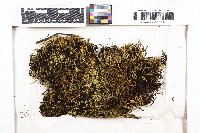
Consortium of Bryophyte Herbaria
- building a Consortium of Bryophytes and Lichens as keystones of cryptobiotic communities -
|
|
|
|
Family: Meteoriaceae
black papillaria moss
[Cryphaea nigrescens (Sw. ex Hedw.) Mont., more] |
|
Powered by Symbiota.





































































































